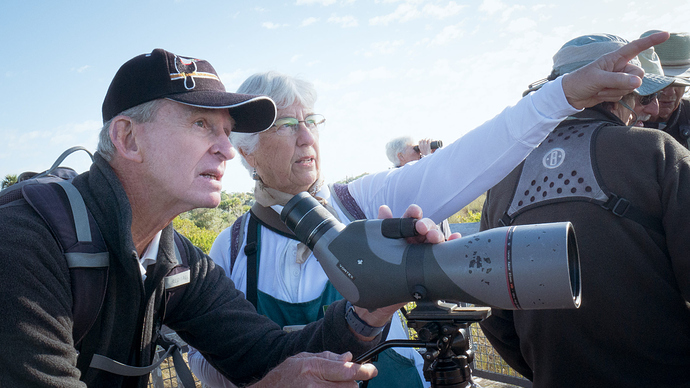“Thirst was made for water; inquiry for truth.”
From “ The Great Divorce” , by C.S. Lewis, 1945
It’s January 2020, and great, epochal positive changes are underway at every level of our reality. They began in earnest in 2012 and have been increasing in speed and magnitude since.
I’ve subjectively concluded that those changes are being driven by untold thousands of simple, inexpensive Orgonite devices based on Wilhelm Reich’s work. Those devices are collectively unknitting and transforming the ancient Death energy matrix that’s been patiently built and expanded by our about-to-be-former Dark masters, well, all the way back to Babylon and before. And the Ether is returning to its ages-long natural state of health and vitality.
One of those changes is that Nature is booming and burgeoning to a level not seen in my lifetime.
Since that statement directly refutes our State Religion, which holds that “Poor Mother Gaia is Dying, Crushed by the Virus-Like Burden of Mankind”, I’ve appended numerous recent examples below to support it.
A current article below is headlined “Lake Erie walleye fishing in January? 2020 is off to a great start .”
The author speaks of “good numbers”, and " a bonanza". Can you see how those are both general? No specific numbers are provided.
As you may recall, generality is a hallmark of propaganda.
In this story, “one of the warmest holiday seasons in recent memory” is credited for the bountiful fishing. That’s a bald-faced lie, in that fish are booming and burgeoning across widely dispersed geographies, in both fresh and salt water, regardless of atmospheric or water temperature. The lie is brazenly used as a plausible-deniability excuse, put forward to give the reader’s subconscious a straw to grasp, and “compartmentalize” the phenomenon.
A paragraph later, we read “With open water almost everywhere, air temperatures in the 40s on Friday and water temperatures hovering a few degrees above freezing, fishermen were very hard to find on the smaller waters .”
How did hard-to-find fishermen drive the “bonanza” of fish numbers? Why would an author bizarrely describe a bonanza as merely “good”? Lies don’t stand up very well to examination, as you can see.
A second story below is headlined “Two West Virginia record fish caught so far in January.”
Where the author used the general “fish”, instead of the names of the fish, to make the subject drastically less searchable.
As you may recall, generality is a hallmark of propaganda.
“Zachary Adkins, of Cabins, caught a 53.1-inch, 59-pound grass carp at Warden Lake in Hardy County on January 3. Adkins used a large swimbait to catch the fish, which broke the previous length record of 50.75 inches.”
The author uses the terse, general “broke” to describe the margin between the records. They provide the numbers, but hedge by omitting the percentage increase between them, as providing it would be much more impactful. So I had to do the math. It’s 4.6% longer than the previous record holder. Such records are usually broken by tiny margins, as the organism gets closer and closer to its maximum possible size.
“Justin Conner, of Culloden, caught a 49.84-inch, 58.38-pound blue catfish on the Ohio River in Mason County on Jan. 11. Conner used cut shad to catch the fish, which broke the previous length record of 47.75 inches.”
The author uses the terse, general “broke” to describe the margin between the records. They provide the numbers, but hedge by omitting the percentage increase between them, as providing it would be much more impactful. So I had to do the math. It’s 4.4% longer than the previous record holder. Such records are usually broken by tiny margins, as the organism gets closer and closer to its maximum possible size.
Here’s a picture of Conner’s fish:
A third story below is headlined “Exciting Results From the Christmas Bird Count in the Garden Are Here.”
Where “exciting results”, while lurid, is general. As you may recall, generality is a hallmark of propaganda.
In the article, we learn that “Birders here saw or heard 62 species — the highest number ever recorded for the Garden’s Christmas count (more than 1,400 individual birds were tallied).”
The author has provided a general number of individual birds (more than 1,400), and then taken care to not mention any context for it.
But what’s driving this historically-unprecedented diversity of species?
“the ever-growing proficiency of the birders , says Ed Kemnitzer, the birding leader, citing one participant who can identify species based on a single chirp .”
The Illuminist talking-head shill quoted in the mainstream news article’s suggestion of “Increasing chirp analysis acuity” is a general plausible-deniability excuse, put forward to give the reader’s subconscious a straw to grasp, and “compartmentalize” the phenomenon. If you swallow this one, you must assume that, worldwide, birders are increasing exponentially in their abilities.
Frighteningly, the NPR-addicted will come to just such a conclusion.
Here’s Ed’s picture, along with that of his wife, Liane, in which both of their left eyes are highlighted:
(Ed and Liane Kenmitzer)
Can you see the false look of sincerity he’s trying to muster? I’ve included his picture, along with that of his wife, so you could get a better idea of what generational Satanist Freemasons in positions of marginal influence look like.
If you are angry at my assertion, please remember that Ed attributed unprecedented species diversity to “the ever-growing proficiency of the birders”.
He’s using conscious deception while retaining the firmness of purpose that goes with complete honesty.
His wife, Liane, is using her left hand to make a purportedly-secret Masonic “gesture of recognition”.
Here’s a 19th Century collection of those purportedly-secret Masonic “gestures of recognition”, including the pointing finger that Liane is using immediately above:

(19th Century collection of purportedly-secret Masonic “gestures of recognition”)
The positive changes are increasing in speed and magnitude, and the propaganda used to rebut them is static and rigid.
Propaganda has lifespan.
How long do you think these guys have left in power?
Not very long, now.
Please consider sending them highest love energy as you read this.
Jeff Miller, Brooklyn, New York, January 26, 2020
If you’d like to be added to the mailing list, please send me a note at [email protected]
January 4, 2020 - Cleveland, OH - Lake Erie walleye fishing in January? 2020 is off to a great start
The rain and snowmelt earlier in the week has buoyed the Northeast Ohio steelhead trout streams, luring good numbers of fresh fish up the rivers for winter anglers.
Thanks to one of the warmest holiday seasons in recent memory, local fishing has been a bonanza for hardy anglers casting for walleye on Lake Erie or wading the Northeast Ohio streams for steelhead trout. Cold weather is surely on the horizon, but the relatively balmy temperatures, at least for January, have sidelined the ice fishing on inland lakes and reservoirs.
With open water almost everywhere, air temperatures in the 40s on Friday and water temperatures hovering a few degrees above freezing, fishermen were very hard to find on the smaller waters. An exception has been Wallace Lake in Berea, where the Cleveland Metroparks released a slew of rainbow trout, golden trout, brook trout and brown trout in December. Also getting trout transfusions were Shadow, Ledge, Judge’s and Ranger lakes, which could be better bets because of the angling pressure at Wallace Lake.
(If fish stocking drove the higher numbers, as alleged, why the mention of warm weather? Fish numbers are increasing over widely dispersed geographies, regardless of air or water temperature, or stocking efforts. - ed)
More rain and snow showers are in the forecast for this weekend, but toward the end of next week, warm er weather and brisk south winds will return.
January 7, 2020 - Exciting Results From the Christmas Bird Count in the Garden Are Here
For the past few weeks, birding enthusiasts from across the Western Hemisphere have grabbed binoculars and field journals, assembled into teams, and fanned out to survey our feathered friends.
The National Audubon Society’s Christmas Bird Count, the historic citizen-science initiative, wrapped up its 120th annual audit on January 5. It’ll be some time before all the numbers are submitted and analyzed, but we at the Garden got pretty excited when we saw the result of our count, completed in late December.
Birders here saw or heard 62 species — the highest number ever recorded for the Garden’s Christmas count (more than 1,400 individual birds were tallied). Now, part of that may be attributable to the ever-growing proficiency of the birders, says Ed Kemnitzer, the birding leader, citing one participant who can identify species based on a single chirp. (Ed offers a first-hand account of the Christmas count below.) And part of that may be due to the many variables that affect bird populations — anything from water levels to migratory routes.
But we’re cheering the count as proof that restoration has made a difference for wildlife.
(Not numbers, but the “count”. Another hammering home of the “more assiduous counting” ruse. - ed)
January 20, 2020 - Two West Virginia record fish caught so far in January
Two West Virginia record fish have been caught so far this January. Length records for grass carp and blue catfish were broken by two West Virginia anglers, the state Division of Natural Resources announced on Thursday.
Zachary Adkins, of Cabins, caught a 53.1-inch, 59-pound grass carp at Warden Lake in Hardy County on January 3.
Adkins used a large swimbait to catch the fish, which broke the previous length record of 50.75 inches. William Tucker still holds the state weight record with a 71.69-pound grass carp caught at Warden Lake in 2005.
Justin Conner, of Culloden, caught a 49.84-inch, 58.38-pound blue catfish on the Ohio River in Mason County on Jan. 11.
Conner used cut shad to catch the fish, which broke the previous length record of 47.75 inches. Mark Blauvelt continues to hold the weight record with a 59.74-pound blue catfish caught on the Ohio River in 2016.

